Ministry of Civil Affairs tasked with developing policies for aging population. Wang Xiaoyu reports.
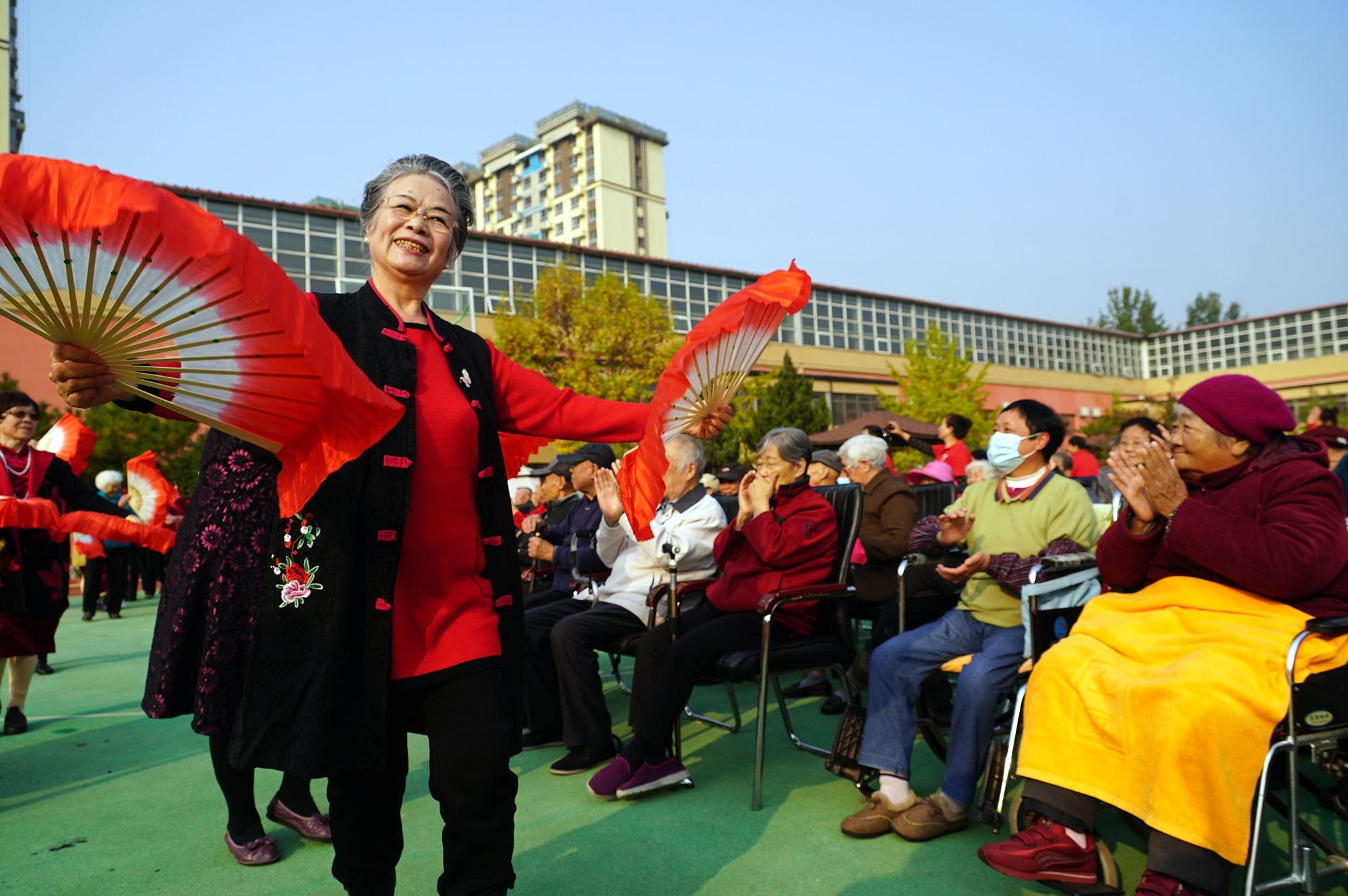 Older performers dance at an event held by the Beijing Folk Custom Museum to celebrate the Double Ninth Festival in Beijing on Oct 23, 2023. (CHENG GONG / FOR CHINA DAILY)
Older performers dance at an event held by the Beijing Folk Custom Museum to celebrate the Double Ninth Festival in Beijing on Oct 23, 2023. (CHENG GONG / FOR CHINA DAILY)
Institutional reforms related to elderly care work and progress toward the establishment of a basic elderly care service system across China were highlights for the sector last year.
The Ministry of Civil Affairs, which assumed responsibility for most elderly care work from the National Health Commission in March, has completed the setting up of a new bureau, and local administrations are making progress in restructuring.
National and regional lists for basic elderly care services were formulated last year, and campaigns were launched to increase catering services for the elderly and care for those having financial difficulty. The number of elderly care facilities in China also kept climbing.
According to data released by the National Bureau of Statistics on Jan 17, China's elderly population — those age 60 or older — grew to 297 million by the end of last year, making up 21.1 percent of the total population, compared with 19.8 percent by late 2022.
READ MORE: Fujian nursing home draws Taiwan seniors
China's total population also dropped for a second consecutive year, by around 2.1 million, due to factors such as low fertility levels, fewer women of childbearing age and delays in marriage.
Yuan Xin, a professor at Nankai University's School of Economics and vice-president of the China Population Association, said the downward trend in total population, coupled with an older demographic profile, will be fundamental features of China in the future and will drive the country toward a deeply aging society.
"It is important to plan ahead in aspects of social and economic resources and policies to deal with the challenge," he said.
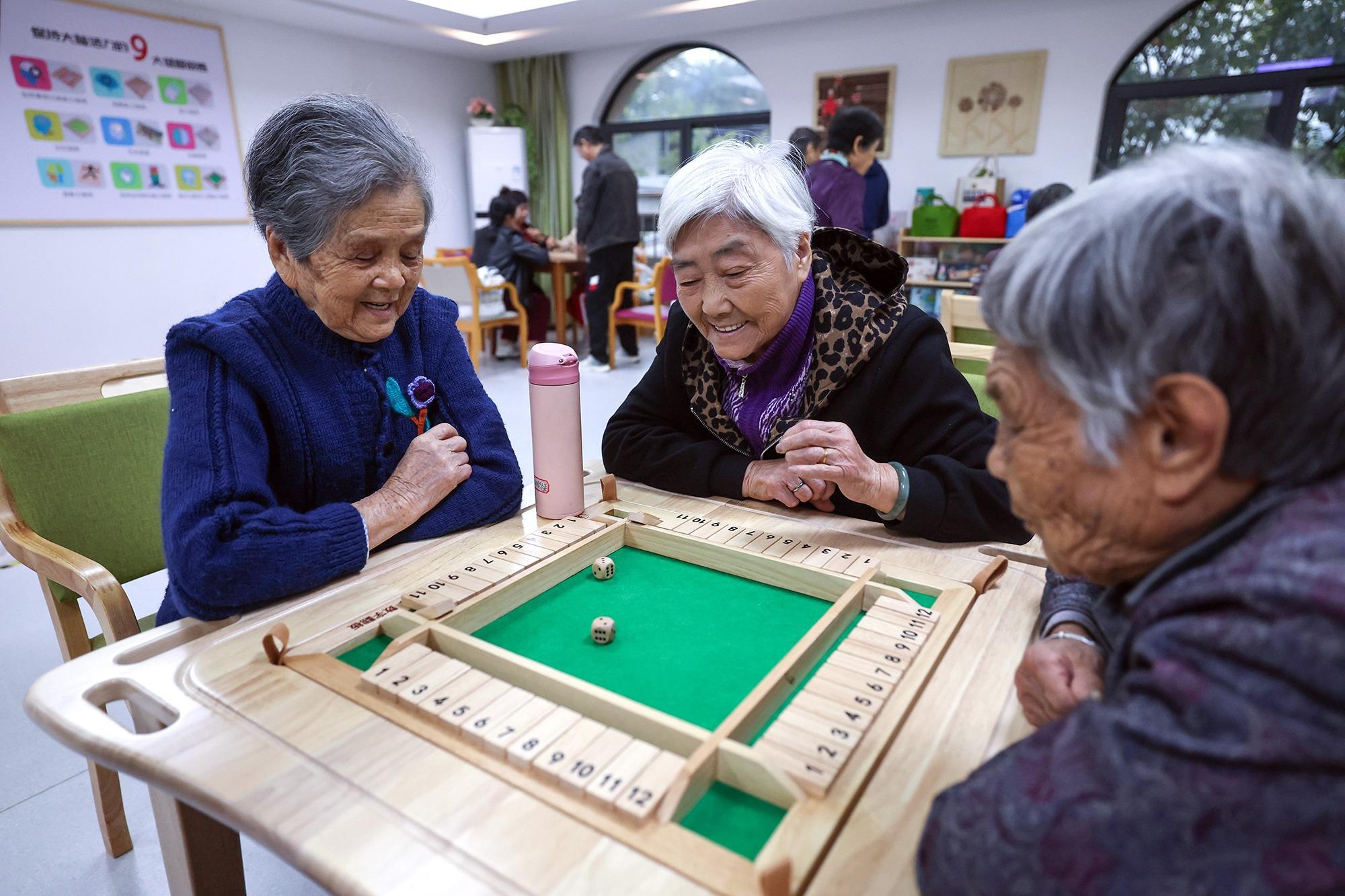 Seniors play a game at an elderly care center in Yunhe county, Zhejiang province, on Nov 10, 2023. (PHOTO / XINHUA)
Seniors play a game at an elderly care center in Yunhe county, Zhejiang province, on Nov 10, 2023. (PHOTO / XINHUA)
Du Peng, head of the gerontology research institute at the Renmin University of China, said in a Global Times article in late 2022 that the central leadership had called for the implementation of a national strategy to actively respond to population aging and had released detailed blueprints.
The next key step was carrying out measures at the grassroots level and making them accessible to the elderly and those in need, he added.
"For the most vulnerable groups, governments should increase subsidies to ensure they can be covered, while some elderly could enjoy both government-subsidized services and market-oriented services," he said.
Yuan said China's elderly population first exceeded 10 percent of the total in 2000 and has been growing rapidly in recent years.
READ MORE: China seeks to expand supply of caregivers for elderly population
"By the middle of this century, the elderly population is predicted to peak at 520 million, taking up 40 percent of the total population," he said. "As people born during times of low fertility will enter old age during the latter half of this century, the number will fall to around 360 million, but the aging trend will continue to deepen and likely approach 50 percent."
Yuan said the working-age population — defined as those age 15 to 59 — would fall from around 870 million at present to 650 million by around 2050.
However, he added, the trend would not necessarily result in a labor shortage because artificial intelligence, robots and other scientific advances could take the place of human labor in a modern digital society, and competition in the employment market would remain intense with a growing number of graduates from colleges and technical schools.
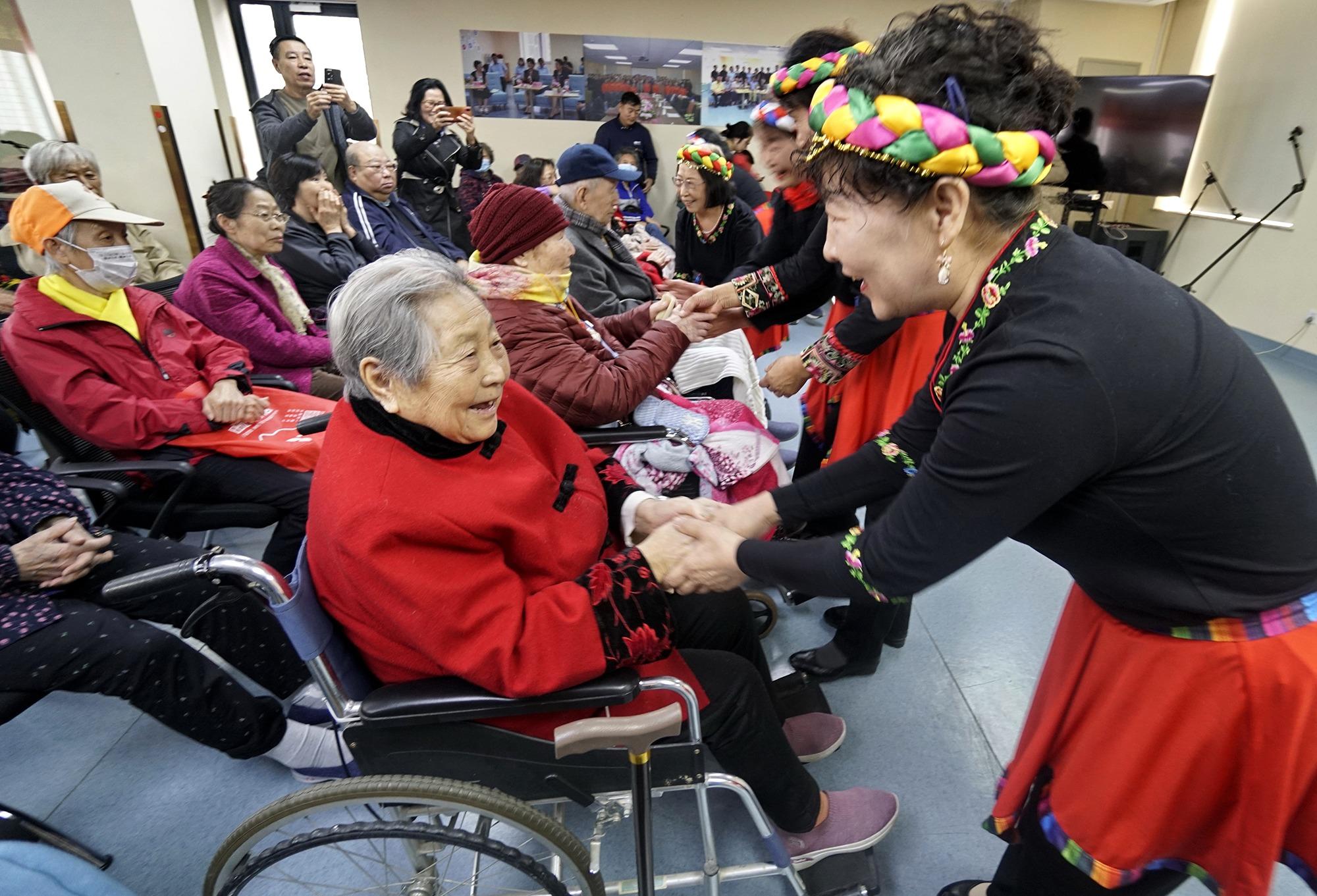 Workers greet residents at a community elderly care center in Beijing on Oct 23, 2023. (PHOTO / XINHUA)
Workers greet residents at a community elderly care center in Beijing on Oct 23, 2023. (PHOTO / XINHUA)
Yuan said relatively younger seniors in their 60s will account for nearly half of all elderly in the next three decades, creating a window of opportunity for China to implement retirement age reforms and increase elderly people's participation in society.
He also noted challenges in providing elderly care and sustaining the pension fund with a ballooning elderly population, longer life expectancies and expectations for higher-quality elderly care services.
During last year's two sessionsthe annual meetings of the nation's top legislative and political advisory bodies — the State Council, China's Cabinet, said that some functions of the National Health Commission would be transferred to the Ministry of Civil Affairs.
It said the ministry would be put in charge of drafting policies and measures to address the aging issue and coordinating their implementation.
The commission will continue to devise policies related to the integration of medical care and elderly care and take charge of work related to the physical and mental health of the elderly.
The ministry said at a meeting in January that an elderly affairs bureau had been established within the ministry, and local civil affairs authorities would be required to set up such departments this year.
Meanwhile, China has accelerated the building of elderly care systems, with a national list of basic elderly care services released in May.
"Some regions have raised additional requirements and innovations based on the national version of the list," said Yu Jianliang, an official at the Ministry of Civil Affairs.
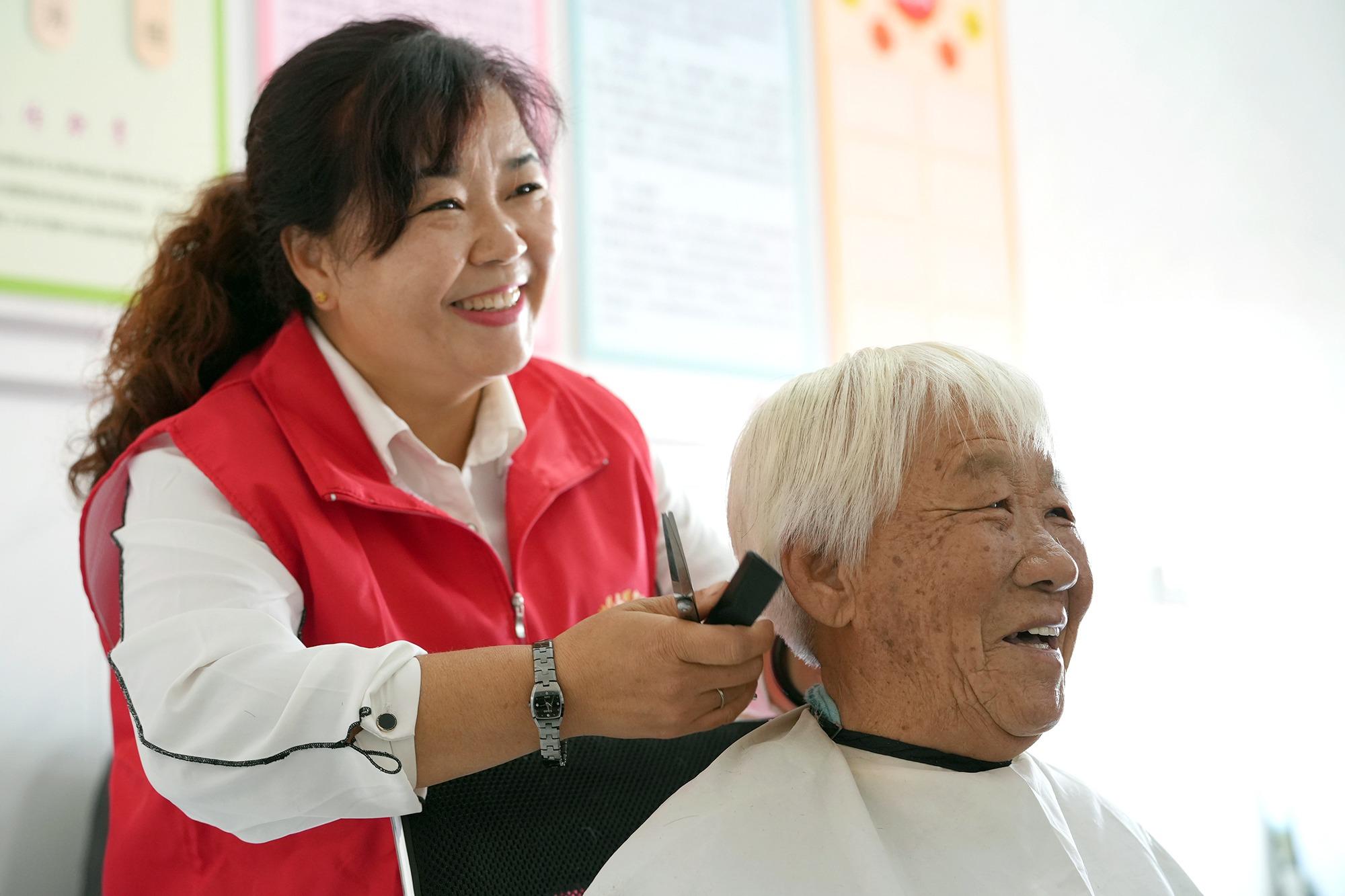 A volunteer gives a haircut to a woman in Hebei province. (PHOTO / XINHUA)
A volunteer gives a haircut to a woman in Hebei province. (PHOTO / XINHUA)
He added that central finances had been allocated to the building of related infrastructure in communities, and localities had been mobilized to give special care to seniors facing harsh conditions.
By the end of last year, the ministry said that about 235,000 homebased elderly care beds had been set up and 418,000 seniors had received door-to-door elderly care services at home. Nearly 1.5 million households with seniors had seen their homes upgraded to be more elderly-friendly.
The number of elderly care facilities nationwide topped 400,000, with 8.2 million beds, by the end of September. The ministry said 41,000 were elderly care homes, with the remainder community facilities.
Wu Yuxian, a 94-year-old resident of Hangzhou, Zhejiang province, was used to picking up meals by herself at a nearby public canteen. But out of safety concerns, the local community and her neighbors began ordering dishes online for her and delivering meals to her doorstep in recent years.
"I read a lot of newspapers every day and feel that my life is very fulfilling," she said during a recent interview with China National Radio. "I prefer staying in my home rather than going into a care home because in my neighborhood, I can still see a lot of young people around."
At the Beishan neighborhood where Wu lives, there are about 10,260 people age 60 and older, accounting for 30 percent of residents.
As part of efforts to develop a basic system for elderly care services, Hangzhou's city government called in August for each major neighborhood to build a community center capable of offering elderly care services by 2025.
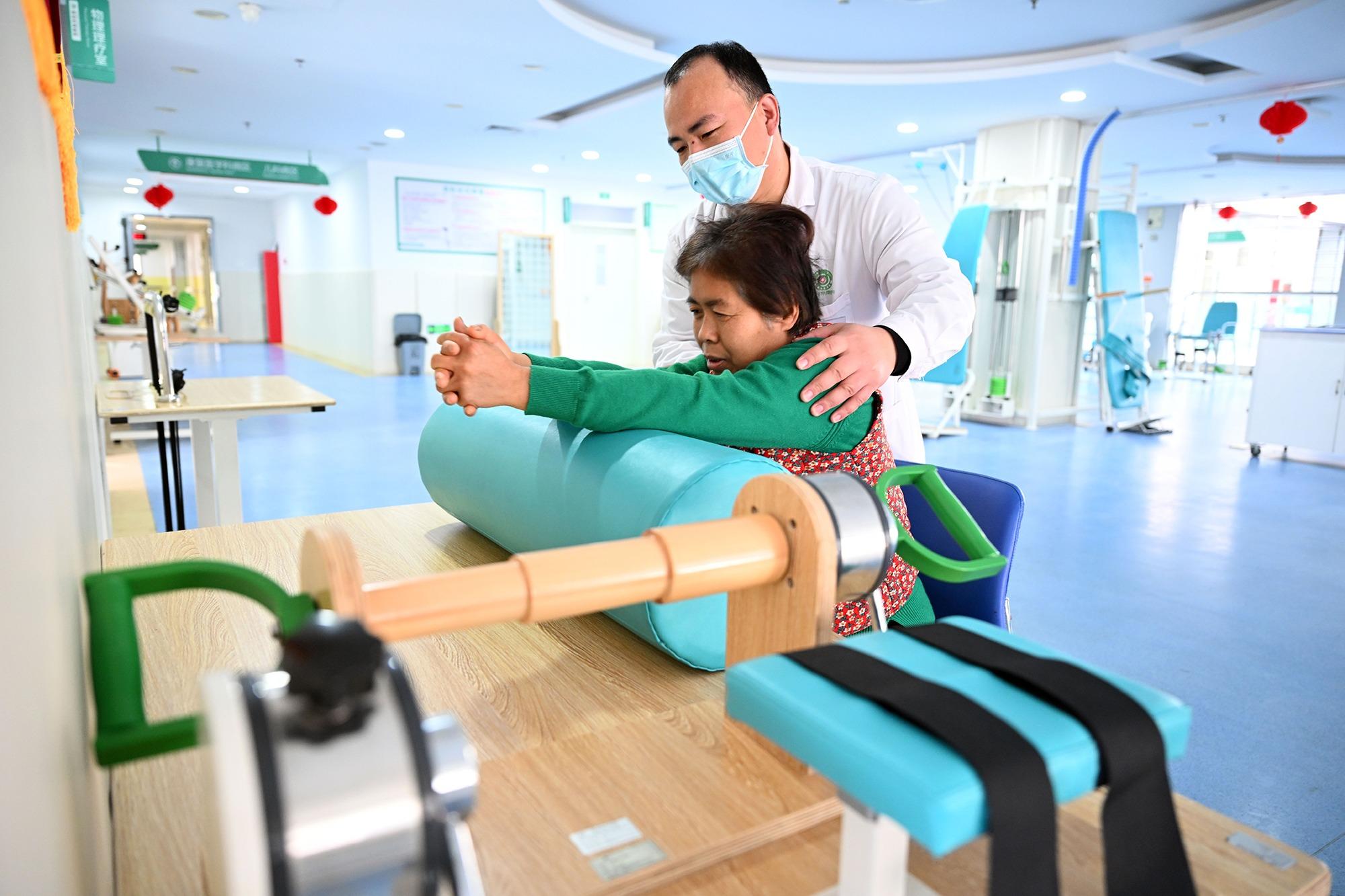 A patient undergoes rehabilitation under the guidance of a doctor in Hebei on Dec 27, 2023. (PHOTO / XINHUA)
A patient undergoes rehabilitation under the guidance of a doctor in Hebei on Dec 27, 2023. (PHOTO / XINHUA)
Hu Xiaodong, an official in the Beishan neighborhood, said it had transformed a public facility into an elderly care service provider where seniors with disabilities can be admitted to beds and given access to professional care, while seniors like Wu who prefer to spend the rest of their lives at home can enjoy daily services such as meal deliveries and medical care.
The neighborhood authorities have also equipped the homes of 22 seniors — primarily those who live alone — with emergency push buttons and surveillance cameras. Staff will check footage twice a day to facilitate a prompt response to incidents.
Wu welcomed the renovation. "My home has also been renovated to incorporate elderly-friendly features," she said. "Now, I am able to sit down while taking a shower, and there is a handle and an alert device by my side when going to the restroom."
On top of ensuring the safety of the elderly and that their basic needs are being met, Hu said that it is important to improve rehabilitation and medical care services targeting the elderly.
"This year, we are planning to cooperate with a third-party organization to build a neighborhoodlevel rehabilitation and care station," he said.
ALSO READ: All older people can benefit from 'silver economy'
In Southwest China's Chongqing, elderly-friendly renovations have not only been implemented at homes, but also the public facilities where the elderly tend to gather and hang out.
A courtyard in its Nan'an district has been fitted with slip-resistant tiles, and handles have been added to benches and chairs. New tables for table tennis — a sport favored by many elderly for its relatively low intensity — have also been installed.
The ministry said more efforts will be made this year to mobilize society to invest in and improve elderly care service systems.
On Jan 15, the State Council unveiled a series of measures to promote the "silver economy", calling on the public and private sectors to make investments and innovations in products and services for seniors.
Contact the writer at wangxiaoyu@chinadaily.com.cn


